Five years ago, I set out to rank all the head coaches in the FBS based on their playing careers.
I didn’t do a very good job.
In reviewing the rankings from 2016, two things stood out: how many head coaches are no longer in their roles today, and how flawed my process seemed to be in evaluating coaches as players. I placed far too much emphasis on the level of college ball played rather than rewarding those who became stars in lower divisions of the sport. The annoying part is I acknowledged who should be rewarded and didn’t follow through.
Not this time.
In re-ranking the 130 current FBS coaches as players, I placed a greater premium on those who made meaningful contributions in college, regardless of level. Naturally, those who were multiyear starters, multiple letter winners or award recipients for FBS teams get more credit, as do those who played professionally, especially in the NFL. Quarterbacks who set records and started for multiple seasons receive significant credit on the list. But coaches who as players held clipboards or waved towels for elite-level programs aren’t ranked nearly as high this time.
The ranking doesn’t change as much at the top or the bottom, but features shake-ups elsewhere, as well as a number of interesting additions. There are more high-end players in this group than in the 2016 version, especially at quarterback, as Josh Heupel (Oklahoma), Steve Sarkisian (BYU), Scott Frost (Nebraska) and Jonathan Smith (Oregon State) join the mix. This list also includes several true superstars in the lower divisions, such as Will Hall (Northwest Mississippi, North Alabama) and Billy Napier (Furman).
No list is flawless and each is subjective, but my hope is this one better reflects college coaches in their playing days.
To jump directly to the top 10, click here
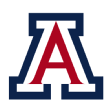 130. Jedd Fisch, Arizona Wildcats: A New Jersey native, Fisch did not play football at either the high school or college levels. He was an all-state tennis player in high school and began coaching high school ball as a student at Florida.
130. Jedd Fisch, Arizona Wildcats: A New Jersey native, Fisch did not play football at either the high school or college levels. He was an all-state tennis player in high school and began coaching high school ball as a student at Florida.
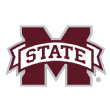 129. Mike Leach, Mississippi State Bulldogs: Before mastering the pass-heavy Air Raid offense, Leach played a sport in which only backward passes are permitted. He played rugby at BYU after a high school football career in Wyoming as a backup.
129. Mike Leach, Mississippi State Bulldogs: Before mastering the pass-heavy Air Raid offense, Leach played a sport in which only backward passes are permitted. He played rugby at BYU after a high school football career in Wyoming as a backup.
 128. David Cutcliffe, Duke Blue Devils: A great playcaller but not much of a player, Cutcliffe’s career ended after his time at Banks High School in Birmingham, Alabama. He set his sights on coaching soon after arriving at Alabama, where he worked as a student assistant under Bear Bryant.
128. David Cutcliffe, Duke Blue Devils: A great playcaller but not much of a player, Cutcliffe’s career ended after his time at Banks High School in Birmingham, Alabama. He set his sights on coaching soon after arriving at Alabama, where he worked as a student assistant under Bear Bryant.
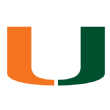 127. Manny Diaz, Miami Hurricanes: The son of the former Miami mayor with the same name, Diaz played football, basketball and baseball in high school. He then attended Florida State but did not play and pursued a career as a sports journalist before switching gears later.
127. Manny Diaz, Miami Hurricanes: The son of the former Miami mayor with the same name, Diaz played football, basketball and baseball in high school. He then attended Florida State but did not play and pursued a career as a sports journalist before switching gears later.
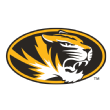 126. Eliah Drinkwitz, Missouri Tigers: Drinkwitz grew up in Alma, Arkansas, and played high school football, earning all-state honors as a linebacker despite a lack of size. He attended Arkansas Tech but did not play football there, instead serving as student-body president.
126. Eliah Drinkwitz, Missouri Tigers: Drinkwitz grew up in Alma, Arkansas, and played high school football, earning all-state honors as a linebacker despite a lack of size. He attended Arkansas Tech but did not play football there, instead serving as student-body president.
 125. Hugh Freeze, Liberty Flames: Freeze was a multisport athlete growing up in Senatobia, Mississippi, and played baseball at his first collegiate stop, Northwest Mississippi Community College. He later transferred to Southern Miss but didn’t play sports there.
125. Hugh Freeze, Liberty Flames: Freeze was a multisport athlete growing up in Senatobia, Mississippi, and played baseball at his first collegiate stop, Northwest Mississippi Community College. He later transferred to Southern Miss but didn’t play sports there.
 124. Sonny Dykes, SMU Mustangs: He played football in high school as well as baseball. But after arriving at Texas Tech, where his father, Spike, was head football coach, Sonny went the baseball route and earned two letters as a Red Raiders first baseman in 1989 and 1990. He then began coaching baseball before switching to football.
124. Sonny Dykes, SMU Mustangs: He played football in high school as well as baseball. But after arriving at Texas Tech, where his father, Spike, was head football coach, Sonny went the baseball route and earned two letters as a Red Raiders first baseman in 1989 and 1990. He then began coaching baseball before switching to football.
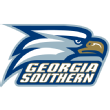 123. Chad Lunsford, Georgia Southern Eagles: Lunsford played linebacker and center in high school for Georgia Hall of Fame coach T. McFerrin. His teams made the playoffs every year and went 20-3 during his final two seasons. Lunsford went on to attend Georgia College, which does not have a football program.
123. Chad Lunsford, Georgia Southern Eagles: Lunsford played linebacker and center in high school for Georgia Hall of Fame coach T. McFerrin. His teams made the playoffs every year and went 20-3 during his final two seasons. Lunsford went on to attend Georgia College, which does not have a football program.
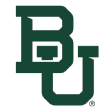 122. Dave Aranda, Baylor Bears: Aranda endured five shoulder surgeries after playing inside linebacker for Redlands High School in California. As a senior, he took the field in a playoff game despite a broken clavicle. He briefly tried to play for Division II Cal Lutheran, but another shoulder injury ended his playing career, and he became a student coach.
122. Dave Aranda, Baylor Bears: Aranda endured five shoulder surgeries after playing inside linebacker for Redlands High School in California. As a senior, he took the field in a playoff game despite a broken clavicle. He briefly tried to play for Division II Cal Lutheran, but another shoulder injury ended his playing career, and he became a student coach.
 121. Ryan Silverfield, Memphis Tigers: Silverfield played for two state championship teams at The Bolles School in Jacksonville, Florida, which once was ranked as the nation’s No. 1 team. He was a first-team all-area selection as a senior, but did not play in college at Hampden-Sydney, a Division III school in Virginia.
121. Ryan Silverfield, Memphis Tigers: Silverfield played for two state championship teams at The Bolles School in Jacksonville, Florida, which once was ranked as the nation’s No. 1 team. He was a first-team all-area selection as a senior, but did not play in college at Hampden-Sydney, a Division III school in Virginia.
 120. Bill Clark, UAB Blazers: Clark grew up in a coaching family and played in high school for his father, Ragan. He became an all-state offensive lineman in Piedmont, Alabama, but a back injury ended his career. He attended Jacksonville State but did not play there.
120. Bill Clark, UAB Blazers: Clark grew up in a coaching family and played in high school for his father, Ragan. He became an all-state offensive lineman in Piedmont, Alabama, but a back injury ended his career. He attended Jacksonville State but did not play there.
 119. Lincoln Riley, Oklahoma Sooners: Riley played quarterback at Muleshoe High School in Texas, and helped the team to the state semifinals as a senior despite an injured shoulder. He walked on at quarterback for Texas Tech but became a student assistant there for Mike Leach.
119. Lincoln Riley, Oklahoma Sooners: Riley played quarterback at Muleshoe High School in Texas, and helped the team to the state semifinals as a senior despite an injured shoulder. He walked on at quarterback for Texas Tech but became a student assistant there for Mike Leach.
 118. Mike Bloomgren, Rice Owls: A Tallahassee, Florida, native, Bloomgren played tight end for two years at Culver-Stockton College, an NAIA program in Canton, Missouri. He then transferred home to Florida State but did not play there, serving as a student assistant for Bobby Bowden.
118. Mike Bloomgren, Rice Owls: A Tallahassee, Florida, native, Bloomgren played tight end for two years at Culver-Stockton College, an NAIA program in Canton, Missouri. He then transferred home to Florida State but did not play there, serving as a student assistant for Bobby Bowden.
 117. Chip Lindsey, Troy Trojans: The Madison, Alabama, native lettered in three sports in high school before playing wide receiver at North Alabama, where he earned a letter in 1992. Lindsey then transferred to the University of Alabama but did not play for the Tide.
117. Chip Lindsey, Troy Trojans: The Madison, Alabama, native lettered in three sports in high school before playing wide receiver at North Alabama, where he earned a letter in 1992. Lindsey then transferred to the University of Alabama but did not play for the Tide.
 116. Philip Montgomery, Tulsa Golden Hurricane: Montgomery grew up all over Texas and played on both sides of the ball (quarterback and free safety) for Tarleton State, a Division II program in the state. He did not letter for the Texans.
116. Philip Montgomery, Tulsa Golden Hurricane: Montgomery grew up all over Texas and played on both sides of the ball (quarterback and free safety) for Tarleton State, a Division II program in the state. He did not letter for the Texans.
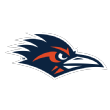 115. Jeff Traylor, UTSA Roadrunners: Traylor walked on at Stephen F. Austin, playing four years as a backup tight end. He didn’t see the field much for the FCS Lumberjacks.
115. Jeff Traylor, UTSA Roadrunners: Traylor walked on at Stephen F. Austin, playing four years as a backup tight end. He didn’t see the field much for the FCS Lumberjacks.
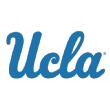 114. Chip Kelly, UCLA Bruins: An undersized high school quarterback in Manchester, New Hampshire, Kelly went to play for the University of New Hampshire. He started out at quarterback but switched to cornerback, rarely seeing the field. He had his only tackle during the 1983 season.
114. Chip Kelly, UCLA Bruins: An undersized high school quarterback in Manchester, New Hampshire, Kelly went to play for the University of New Hampshire. He started out at quarterback but switched to cornerback, rarely seeing the field. He had his only tackle during the 1983 season.
 113. Butch Jones, Arkansas State Red Wolves: Jones grew up in Saugatuck, Michigan, and attended nearby Ferris State. He walked onto the Division II team and earned two letters as a running back and wide receiver. But a knee injury ended his career after the 1987 season.
113. Butch Jones, Arkansas State Red Wolves: Jones grew up in Saugatuck, Michigan, and attended nearby Ferris State. He walked onto the Division II team and earned two letters as a running back and wide receiver. But a knee injury ended his career after the 1987 season.
 112. Jamey Chadwell, Coastal Carolina Chanticleers: The son of a high school coach, Chadwell played quarterback and attended East Tennessee State, where he played from 1996 to 1999. He was set to start the 1997 season but suffered a broken ankle in preseason practice. Chadwell was relegated to backup duties during his career.
112. Jamey Chadwell, Coastal Carolina Chanticleers: The son of a high school coach, Chadwell played quarterback and attended East Tennessee State, where he played from 1996 to 1999. He was set to start the 1997 season but suffered a broken ankle in preseason practice. Chadwell was relegated to backup duties during his career.
 111. Lane Kiffin, Ole Miss Rebels: The son of longtime college and NFL coach Monte Kiffin was destined to follow the family profession. Kiffin played quarterback at Fresno State from 1994 to 1996 but didn’t see the field. He became a student coach as a senior, helping Fresno State’s starting QB Billy Volek and incoming freshman David Carr, the eventual No. 1 NFL draft pick.
111. Lane Kiffin, Ole Miss Rebels: The son of longtime college and NFL coach Monte Kiffin was destined to follow the family profession. Kiffin played quarterback at Fresno State from 1994 to 1996 but didn’t see the field. He became a student coach as a senior, helping Fresno State’s starting QB Billy Volek and incoming freshman David Carr, the eventual No. 1 NFL draft pick.
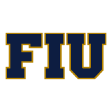 110. Butch Davis, Florida International Panthers: The Oklahoma native attended Arkansas under Hall of Fame coach Frank Broyles. He played defensive end for the Razorbacks, but a knee injury sidelined him after his freshman year, and he became a student coach.
110. Butch Davis, Florida International Panthers: The Oklahoma native attended Arkansas under Hall of Fame coach Frank Broyles. He played defensive end for the Razorbacks, but a knee injury sidelined him after his freshman year, and he became a student coach.
 109. Jake Spavital, Texas State Bobcats: Spavital went 26-1 as the starting quarterback for Union High School in Tulsa, Oklahoma, winning a state title in 2002. He then earned two letters as a quarterback and a punter at FCS Missouri State, where he struggled with injuries. Spavital completed his only pass during the 2007 season for 26 yards.
109. Jake Spavital, Texas State Bobcats: Spavital went 26-1 as the starting quarterback for Union High School in Tulsa, Oklahoma, winning a state title in 2002. He then earned two letters as a quarterback and a punter at FCS Missouri State, where he struggled with injuries. Spavital completed his only pass during the 2007 season for 26 yards.
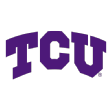 108. Gary Patterson, TCU Horned Frogs: Like many, Patterson capitalized on the junior college system in Kansas, playing two seasons on defense for Dodge City Community. He then walked on at Kansas State as a linebacker/safety but did not letter in two seasons for the Wildcats.
108. Gary Patterson, TCU Horned Frogs: Like many, Patterson capitalized on the junior college system in Kansas, playing two seasons on defense for Dodge City Community. He then walked on at Kansas State as a linebacker/safety but did not letter in two seasons for the Wildcats.
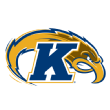 107. Sean Lewis, Kent State Golden Flashes: Lewis came to Wisconsin as a decorated high school quarterback recruit, but switched positions to tight end, earning two letters at the position while contributing mostly behind the scenes.
107. Sean Lewis, Kent State Golden Flashes: Lewis came to Wisconsin as a decorated high school quarterback recruit, but switched positions to tight end, earning two letters at the position while contributing mostly behind the scenes.
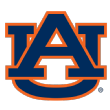 106. Bryan Harsin, Auburn Tigers: Before taking the Auburn job, Harsin spent practically his entire life in Boise, Idaho. After playing for Boise’s Capital High School, he was a Boise State quarterback from 1996 to 1999. Harsin didn’t play much, though, recording only 39 pass attempts.
106. Bryan Harsin, Auburn Tigers: Before taking the Auburn job, Harsin spent practically his entire life in Boise, Idaho. After playing for Boise’s Capital High School, he was a Boise State quarterback from 1996 to 1999. Harsin didn’t play much, though, recording only 39 pass attempts.
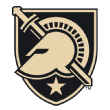 105. Jeff Monken, Army Black Knights: You might be surprised that an Army team that ranked 128th nationally in pass attempts last season (76) is coached by a former wide receiver from Millikin University, a Division III program in Decatur, Illinois. Monken played football all four years there but also made his mark in track, where he served as a co-captain in 1989.
105. Jeff Monken, Army Black Knights: You might be surprised that an Army team that ranked 128th nationally in pass attempts last season (76) is coached by a former wide receiver from Millikin University, a Division III program in Decatur, Illinois. Monken played football all four years there but also made his mark in track, where he served as a co-captain in 1989.
 104. Dave Clawson, Wake Forest Demon Deacons: Those who follow Division III athletics likely know about Williams College, one of the nation’s best all-around programs. Clawson played defensive back there from 1985 to 1988 and also played basketball for the Ephs.
104. Dave Clawson, Wake Forest Demon Deacons: Those who follow Division III athletics likely know about Williams College, one of the nation’s best all-around programs. Clawson played defensive back there from 1985 to 1988 and also played basketball for the Ephs.
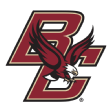 103. Jeff Hafley, Boston College Eagles: Hafley played four seasons as a wide receiver at Siena College, an FCS program, from 1997 to 2000. He endured multiple leg injuries and surgeries that pushed him toward coaching.
103. Jeff Hafley, Boston College Eagles: Hafley played four seasons as a wide receiver at Siena College, an FCS program, from 1997 to 2000. He endured multiple leg injuries and surgeries that pushed him toward coaching.
 102. Jim McElwain, Central Michigan Chippewas: McElwain played quarterback at future FCS power Eastern Washington back when the school was a Division II independent. He played mostly as a backup from 1980 to 1983.
102. Jim McElwain, Central Michigan Chippewas: McElwain played quarterback at future FCS power Eastern Washington back when the school was a Division II independent. He played mostly as a backup from 1980 to 1983.
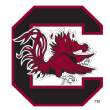 101. Shane Beamer, South Carolina Gamecocks: Beamer turned down a partial scholarship at Charleston Southern to walk on at Virginia Tech, where his father Frank was a Hall of Fame coach. Shane played wide receiver and long snapper on five bowl teams and three Big East championship teams. He snapped for the 1999 Hokies team that played for the national title.
101. Shane Beamer, South Carolina Gamecocks: Beamer turned down a partial scholarship at Charleston Southern to walk on at Virginia Tech, where his father Frank was a Hall of Fame coach. Shane played wide receiver and long snapper on five bowl teams and three Big East championship teams. He snapped for the 1999 Hokies team that played for the national title.
 100. Will Healy, Charlotte 49ers: Healy starred as a high school quarterback in Chattanooga, Tennessee, eclipsing 7,700 career passing yards and finishing as a finalist for Tennessee’s “Mr. Football.” He was a reserve quarterback at Richmond but earned a co-captain title in 2008, when the Spiders won the FCS national championship.
100. Will Healy, Charlotte 49ers: Healy starred as a high school quarterback in Chattanooga, Tennessee, eclipsing 7,700 career passing yards and finishing as a finalist for Tennessee’s “Mr. Football.” He was a reserve quarterback at Richmond but earned a co-captain title in 2008, when the Spiders won the FCS national championship.
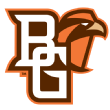 99. Scot Loeffler, Bowling Green Falcons: Loeffler was a standout quarterback recruit from Barberton, Ohio, and came to Michigan as one of the top-5 signal callers in his class. But he tore the labrum in his throwing shoulder against Ohio State as a freshman, and never fully recovered. He played for Michigan from 1993 to 1996.
99. Scot Loeffler, Bowling Green Falcons: Loeffler was a standout quarterback recruit from Barberton, Ohio, and came to Michigan as one of the top-5 signal callers in his class. But he tore the labrum in his throwing shoulder against Ohio State as a freshman, and never fully recovered. He played for Michigan from 1993 to 1996.
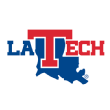 98. Skip Holtz, Louisiana Tech Bulldogs: Holtz followed the “Rudy” route, logging two years at Holy Cross College in South Bend, Indiana, before transferring to Notre Dame to play for his father, Lou. Skip earned a letter at Notre Dame in 1986, playing mostly on special teams and as a reserve wide receiver.
98. Skip Holtz, Louisiana Tech Bulldogs: Holtz followed the “Rudy” route, logging two years at Holy Cross College in South Bend, Indiana, before transferring to Notre Dame to play for his father, Lou. Skip earned a letter at Notre Dame in 1986, playing mostly on special teams and as a reserve wide receiver.
 97. Walt Bell, UMass Minutemen: Bell earned four letters as a wide receiver at Middle Tennessee from 2003 to 2006. He played mostly on special teams for the Blue Raiders but started a game in 2005.
97. Walt Bell, UMass Minutemen: Bell earned four letters as a wide receiver at Middle Tennessee from 2003 to 2006. He played mostly on special teams for the Blue Raiders but started a game in 2005.
 96. Dave Doeren, NC State Wolfpack: A four-year letter winner at FCS Drake, Doeren played tight end for the Bulldogs in the early 1990s and recorded 19 career receptions and 237 yards. He earned Academic All-America honors as a senior.
96. Dave Doeren, NC State Wolfpack: A four-year letter winner at FCS Drake, Doeren played tight end for the Bulldogs in the early 1990s and recorded 19 career receptions and 237 yards. He earned Academic All-America honors as a senior.
 95. Randy Edsall, UConn Huskies: The Glen Rock, Pennsylvania, native was all-state in football, baseball and basketball in high school. He played quarterback at Syracuse, earning one letter but rarely playing as a reserve. He also long-snapped for the Orange.
95. Randy Edsall, UConn Huskies: The Glen Rock, Pennsylvania, native was all-state in football, baseball and basketball in high school. He played quarterback at Syracuse, earning one letter but rarely playing as a reserve. He also long-snapped for the Orange.
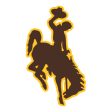 94. Craig Bohl, Wyoming Cowboys: Bohl grew up in Lincoln, Nebraska, and was a reserve walk-on defensive back for the hometown Huskers from 1977 to 1979 under coach Tom Osborne. He played for Nebraska teams that reached the 1979 Orange Bowl and 1980 Cotton Bowl.
94. Craig Bohl, Wyoming Cowboys: Bohl grew up in Lincoln, Nebraska, and was a reserve walk-on defensive back for the hometown Huskers from 1977 to 1979 under coach Tom Osborne. He played for Nebraska teams that reached the 1979 Orange Bowl and 1980 Cotton Bowl.
 93. Blake Anderson, Utah State Aggies: Anderson started his college career at Baylor, logging two seasons at quarterback and wide receiver. But after a knee injury, he transferred to Sam Houston State, an FCS program. He earned two letters there as a receiver.
93. Blake Anderson, Utah State Aggies: Anderson started his college career at Baylor, logging two seasons at quarterback and wide receiver. But after a knee injury, he transferred to Sam Houston State, an FCS program. He earned two letters there as a receiver.
 92. Mike Houston, East Carolina Pirates: Houston played tight end at Mars Hill University, a Division II program in North Carolina. Playing from 1990 to 1994, he earned several team and academic honors, including the football president’s award in 1993 and 1994.
92. Mike Houston, East Carolina Pirates: Houston played tight end at Mars Hill University, a Division II program in North Carolina. Playing from 1990 to 1994, he earned several team and academic honors, including the football president’s award in 1993 and 1994.
 91. Kane Wommack, South Alabama Jaguars: The son of longtime college coach Dave Wommack began his college career as a fullback at Arkansas, appearing in four games with five carries and helping the Hogs to the 2006 SEC West Division title. He transferred to Southern Miss and reached three consecutive bowl games, appearing mostly on special teams.
91. Kane Wommack, South Alabama Jaguars: The son of longtime college coach Dave Wommack began his college career as a fullback at Arkansas, appearing in four games with five carries and helping the Hogs to the 2006 SEC West Division title. He transferred to Southern Miss and reached three consecutive bowl games, appearing mostly on special teams.
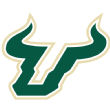 90. Jeff Scott, South Florida Bulls: The son of longtime college coach Brad Scott, Jeff played wide receiver for Clemson and earned letters in 2000, 2001 and 2002. He was part of bowl teams in all three of those seasons, and appeared in 23 games his final two seasons.
90. Jeff Scott, South Florida Bulls: The son of longtime college coach Brad Scott, Jeff played wide receiver for Clemson and earned letters in 2000, 2001 and 2002. He was part of bowl teams in all three of those seasons, and appeared in 23 games his final two seasons.
 89. Clark Lea, Vanderbilt Commodores: The Nashville native began college as a baseball player, helping Birmingham-Southern to an NAIA championship before playing a season at Belmont. He ended up at Vanderbilt and logged three seasons as a fullback, earning a scholarship at the end of his career. He had nine career carries and three receptions.
89. Clark Lea, Vanderbilt Commodores: The Nashville native began college as a baseball player, helping Birmingham-Southern to an NAIA championship before playing a season at Belmont. He ended up at Vanderbilt and logged three seasons as a fullback, earning a scholarship at the end of his career. He had nine career carries and three receptions.
 88. Tyson Helton, Western Kentucky Hilltoppers: Helton played quarterback at Houston for his father, Kim, then the Cougars’ coach. His career spanned from 1996 to 1999, and he saw his most playing time in 1997, when he had 384 pass yards, a touchdown and four interceptions.
88. Tyson Helton, Western Kentucky Hilltoppers: Helton played quarterback at Houston for his father, Kim, then the Cougars’ coach. His career spanned from 1996 to 1999, and he saw his most playing time in 1997, when he had 384 pass yards, a touchdown and four interceptions.
 87. Terry Bowden, UL Monroe Warhawks: Bowden played at West Virginia as a reserve running back, logging 17 career carries and earning letters in 1977 and 1978. His father Bobby left WVU after the 1975 season to begin his historic coaching run at Florida State.
87. Terry Bowden, UL Monroe Warhawks: Bowden played at West Virginia as a reserve running back, logging 17 career carries and earning letters in 1977 and 1978. His father Bobby left WVU after the 1975 season to begin his historic coaching run at Florida State.
 86. Neal Brown, West Virginia Mountaineers: Brown was a star prep receiver in Kentucky, finishing second in state history in receptions. He then stayed home and played for the University of Kentucky, lettering in 1998 and 2000 with 10 total receptions. Brown spent the 1999 season at Massachusetts.
86. Neal Brown, West Virginia Mountaineers: Brown was a star prep receiver in Kentucky, finishing second in state history in receptions. He then stayed home and played for the University of Kentucky, lettering in 1998 and 2000 with 10 total receptions. Brown spent the 1999 season at Massachusetts.
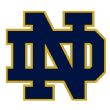 85. Brian Kelly, Notre Dame Fighting Irish: Assumption University in Worcester, Massachusetts, only had a club football team, but Kelly became a star. He set a team record for tackles with 314 and twice earned all-league honors and served as a captain.
85. Brian Kelly, Notre Dame Fighting Irish: Assumption University in Worcester, Massachusetts, only had a club football team, but Kelly became a star. He set a team record for tackles with 314 and twice earned all-league honors and served as a captain.
 84. Steve Addazio, Colorado State Rams: Few FBS coaches are more entrenched in line play than Addazio, who started up front on both offense and defense at Central Connecticut State, then a Division II program. He earned tryouts with the New England Patriots and teams in both the USFL and CFL.
84. Steve Addazio, Colorado State Rams: Few FBS coaches are more entrenched in line play than Addazio, who started up front on both offense and defense at Central Connecticut State, then a Division II program. He earned tryouts with the New England Patriots and teams in both the USFL and CFL.
 83. Clay Helton, USC Trojans: Helton began his career as a reserve quarterback at Auburn and ended it at Houston, lettering in 1993 and 1994 for a team coached by his father, Kim. He appeared in 16 games for the Cougars and passed for 420 yards with a touchdown and four interceptions.
83. Clay Helton, USC Trojans: Helton began his career as a reserve quarterback at Auburn and ended it at Houston, lettering in 1993 and 1994 for a team coached by his father, Kim. He appeared in 16 games for the Cougars and passed for 420 yards with a touchdown and four interceptions.
 82. Paul Chryst, Wisconsin Badgers: One of several FBS coaches leading his alma mater, Chryst played quarterback, tight end and on special teams for some subpar Badgers squads in the late 1980s. He earned three letters at Wisconsin and caught 18 passes for 173 yards and a touchdown.
82. Paul Chryst, Wisconsin Badgers: One of several FBS coaches leading his alma mater, Chryst played quarterback, tight end and on special teams for some subpar Badgers squads in the late 1980s. He earned three letters at Wisconsin and caught 18 passes for 173 yards and a touchdown.
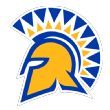 81. Brent Brennan, San Jose State Spartans: Brennan earned two letters as a wide receiver at UCLA in 1993 and 1994. He played on the Bruins’ 1993 Pac-10 championship team that went on to the Rose Bowl.
81. Brent Brennan, San Jose State Spartans: Brennan earned two letters as a wide receiver at UCLA in 1993 and 1994. He played on the Bruins’ 1993 Pac-10 championship team that went on to the Rose Bowl.
 80. Dabo Swinney, Clemson Tigers: A native of Pelham, Alabama, Swinney walked on at the University of Alabama as a wide receiver and later earned a scholarship. He earned three letters for the Crimson Tide and played on the 1992 national championship team. Swinney had seven career receptions for 81 yards.
80. Dabo Swinney, Clemson Tigers: A native of Pelham, Alabama, Swinney walked on at the University of Alabama as a wide receiver and later earned a scholarship. He earned three letters for the Crimson Tide and played on the 1992 national championship team. Swinney had seven career receptions for 81 yards.
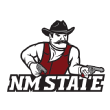 79. Doug Martin, New Mexico State Aggies: After winning consecutive high school state titles in Tennessee, Martin came to Kentucky, where he earned four letters as a quarterback from 1981 to 1984. He started four games in 1982 but was limited by injuries later in his Wildcats career.
79. Doug Martin, New Mexico State Aggies: After winning consecutive high school state titles in Tennessee, Martin came to Kentucky, where he earned four letters as a quarterback from 1981 to 1984. He started four games in 1982 but was limited by injuries later in his Wildcats career.
 78. Tom Allen, Indiana Hoosiers: Allen played at Maranatha Baptist University, a Division III program in Wisconsin that discontinued football in 2017. He ranked among the team leaders in both total tackles and tackles for loss, and also punted for the team. In addition to football, Allen wrestled at Maranatha Baptist.
78. Tom Allen, Indiana Hoosiers: Allen played at Maranatha Baptist University, a Division III program in Wisconsin that discontinued football in 2017. He ranked among the team leaders in both total tackles and tackles for loss, and also punted for the team. In addition to football, Allen wrestled at Maranatha Baptist.
 77. Kirk Ferentz, Iowa Hawkeyes: Ferentz was a three-time letter winner at Connecticut, a Division I-AA program when he played there in the mid-1970s. He played linebacker for the Huskies and served as a team captain during his final season in 1976.
77. Kirk Ferentz, Iowa Hawkeyes: Ferentz was a three-time letter winner at Connecticut, a Division I-AA program when he played there in the mid-1970s. He played linebacker for the Huskies and served as a team captain during his final season in 1976.
 76. Gus Malzahn, UCF Knights: His college career began at Arkansas as a walk-on wide receiver, but he made his mark after transferring to Henderson State, a Division II program in Arkadelphia, Arkansas. Malzahn was an honorable mention all-league selection in 1989, and punted for the Reddies in addition to playing receiver.
76. Gus Malzahn, UCF Knights: His college career began at Arkansas as a walk-on wide receiver, but he made his mark after transferring to Henderson State, a Division II program in Arkadelphia, Arkansas. Malzahn was an honorable mention all-league selection in 1989, and punted for the Reddies in addition to playing receiver.
 75. Charles Huff, Marshall Thundering Herd: The Maryland native played college ball at FCS Hampton, where he captained the 2005 team and started all 12 games at center. Huff also played guard, fullback and tight end during his career with the Pirates. He played on three conference champion teams and two that reached the FCS playoffs.
75. Charles Huff, Marshall Thundering Herd: The Maryland native played college ball at FCS Hampton, where he captained the 2005 team and started all 12 games at center. Huff also played guard, fullback and tight end during his career with the Pirates. He played on three conference champion teams and two that reached the FCS playoffs.
 74. Troy Calhoun, Air Force Falcons: Calhoun started for Air Force at quarterback in 1986, when the team went 6-5. In 1985, he became one of two freshmen to earn a letter on a 12-1 Falcons team under longtime coach Fisher DeBerry.
74. Troy Calhoun, Air Force Falcons: Calhoun started for Air Force at quarterback in 1986, when the team went 6-5. In 1985, he became one of two freshmen to earn a letter on a 12-1 Falcons team under longtime coach Fisher DeBerry.
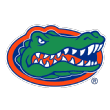 73. Dan Mullen, Florida Gators: A New Hampshire native, Mullen attended Ursinus College, a Division III program in Collegeville, Pennsylvania. He was a first-team all-conference tight end for Ursinus, where he started two seasons.
73. Dan Mullen, Florida Gators: A New Hampshire native, Mullen attended Ursinus College, a Division III program in Collegeville, Pennsylvania. He was a first-team all-conference tight end for Ursinus, where he started two seasons.
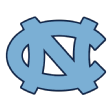 72. Mack Brown, North Carolina Tar Heels: A star high school running back in Tennessee, Brown earned prep All-American recognition. He started his college career at Vanderbilt, recording 364 rush yards and three touchdowns in 1970. Brown then transferred to Florida State, where he earned two letters but didn’t play much before knee injuries ended his career.
72. Mack Brown, North Carolina Tar Heels: A star high school running back in Tennessee, Brown earned prep All-American recognition. He started his college career at Vanderbilt, recording 364 rush yards and three touchdowns in 1970. Brown then transferred to Florida State, where he earned two letters but didn’t play much before knee injuries ended his career.
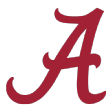 71. Nick Saban, Alabama Crimson Tide: After quarterbacking Monongah High School to a West Virginia state title in 1968, Saban played defensive back at Kent State from 1970 to 1972. He teamed with future NFL Hall of Famer Jack Lambert and future college coach Gary Pinkel, and helped Kent State to its first and only MAC title in 1972.
71. Nick Saban, Alabama Crimson Tide: After quarterbacking Monongah High School to a West Virginia state title in 1968, Saban played defensive back at Kent State from 1970 to 1972. He teamed with future NFL Hall of Famer Jack Lambert and future college coach Gary Pinkel, and helped Kent State to its first and only MAC title in 1972.
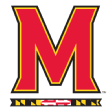 70. Mike Locksley, Maryland Terrapins: Locksley grew up in Washington, D.C., and played safety at FCS Towson University in Baltimore. He was named the team’s defensive MVP in 1991 and finished 19th on the school’s all-time tackles list.
70. Mike Locksley, Maryland Terrapins: Locksley grew up in Washington, D.C., and played safety at FCS Towson University in Baltimore. He was named the team’s defensive MVP in 1991 and finished 19th on the school’s all-time tackles list.
 69. Dana Holgorsen, Houston Cougars: Holgorsen’s roots in the Air Raid offense go back to its inception. He played for head coach Hal Mumme and Leach, then a young assistant, at NAIA Iowa Wesleyan. Holgorsen caught 145 passes for 1,711 yards, marks that rank in the top-10 in team history.
69. Dana Holgorsen, Houston Cougars: Holgorsen’s roots in the Air Raid offense go back to its inception. He played for head coach Hal Mumme and Leach, then a young assistant, at NAIA Iowa Wesleyan. Holgorsen caught 145 passes for 1,711 yards, marks that rank in the top-10 in team history.
 68. Bret Bielema, Illinois Fighting Illini: A walk-on defensive lineman from Prophetstown, Illinois, Bielema earned a scholarship after his first season under coach Hayden Fry. He started as a junior and was named captain as a senior in 1992. He signed with the Seattle Seahawks as a free agent and ended his career in 1994 with the Arena League’s Milwaukee Mustangs.
68. Bret Bielema, Illinois Fighting Illini: A walk-on defensive lineman from Prophetstown, Illinois, Bielema earned a scholarship after his first season under coach Hayden Fry. He started as a junior and was named captain as a senior in 1992. He signed with the Seattle Seahawks as a free agent and ended his career in 1994 with the Arena League’s Milwaukee Mustangs.
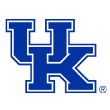 67. Mark Stoops, Kentucky Wildcats: Stoops followed his older brothers Bob and Mike to Iowa, where he, too, played defensive back. He earned three letters from 1987 to 1989, had two interceptions and played for four Hawkeye bowl teams.
67. Mark Stoops, Kentucky Wildcats: Stoops followed his older brothers Bob and Mike to Iowa, where he, too, played defensive back. He earned three letters from 1987 to 1989, had two interceptions and played for four Hawkeye bowl teams.
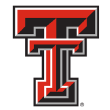 66. Matt Wells, Texas Tech Red Raiders: Wells’ career at Utah State was bookended by Big West championships in 1993 and 1996. He played quarterback for the Aggies, passing for 1,812 yards with 11 touchdowns and 11 interceptions in 1994. Wells was a redshirt freshman in 1994 when Utah State won its first bowl game.
66. Matt Wells, Texas Tech Red Raiders: Wells’ career at Utah State was bookended by Big West championships in 1993 and 1996. He played quarterback for the Aggies, passing for 1,812 yards with 11 touchdowns and 11 interceptions in 1994. Wells was a redshirt freshman in 1994 when Utah State won its first bowl game.
 65. Ken Niumatalolo, Navy Midshipmen: Niumatalolo was a three-year letter winner as a quarterback at Hawaii, and played on the school’s first bowl team in 1989 under coach Bob Wagner. He had 84 career carries for 367 rush yards, and passed for 262 yards.
65. Ken Niumatalolo, Navy Midshipmen: Niumatalolo was a three-year letter winner as a quarterback at Hawaii, and played on the school’s first bowl team in 1989 under coach Bob Wagner. He had 84 career carries for 367 rush yards, and passed for 262 yards.
 64. Pat Narduzzi, Pittsburgh Panthers: Not surprisingly, Narduzzi played linebacker in college, and was a pretty good one. He started out at Youngstown State, playing for his father, Bill, and leading the league in tackles as a freshman. After Youngstown fired Bill Narduzzi, Pat transferred to Rhode Island and started there from 1987 to 1989.
64. Pat Narduzzi, Pittsburgh Panthers: Not surprisingly, Narduzzi played linebacker in college, and was a pretty good one. He started out at Youngstown State, playing for his father, Bill, and leading the league in tackles as a freshman. After Youngstown fired Bill Narduzzi, Pat transferred to Rhode Island and started there from 1987 to 1989.
 63. Seth Littrell, North Texas Mean Green: Another fullback! Long before becoming a pass-first offensive playcaller, Littrell was a gifted fullback for Oklahoma. He captained the Sooners’ 2000 national championship team and rushed for 715 yards and 11 touchdowns on 170 career carries for OU.
63. Seth Littrell, North Texas Mean Green: Another fullback! Long before becoming a pass-first offensive playcaller, Littrell was a gifted fullback for Oklahoma. He captained the Sooners’ 2000 national championship team and rushed for 715 yards and 11 touchdowns on 170 career carries for OU.
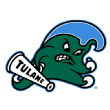 62. Willie Fritz, Tulane Green Wave: Before making his mark as a coach at off-the-beaten-path programs, Fritz starred as a player for one of them. He was a four-year starter and a two-time all-conference selection at Pittsburg State, an NAIA program in Kansas. He helped Pittsburg State to two league championships and a national championship game appearance in 1981.
62. Willie Fritz, Tulane Green Wave: Before making his mark as a coach at off-the-beaten-path programs, Fritz starred as a player for one of them. He was a four-year starter and a two-time all-conference selection at Pittsburg State, an NAIA program in Kansas. He helped Pittsburg State to two league championships and a national championship game appearance in 1981.
 61. Mel Tucker, Michigan State Spartans: The Cleveland native was a high school standout in both football and basketball before going on to Wisconsin, where he earned three letters as a cornerback and safety under coach Barry Alvarez. Tucker played on Wisconsin’s 1993 Big Ten championship team and recorded 47 tackles and four pass breakups in his career.
61. Mel Tucker, Michigan State Spartans: The Cleveland native was a high school standout in both football and basketball before going on to Wisconsin, where he earned three letters as a cornerback and safety under coach Barry Alvarez. Tucker played on Wisconsin’s 1993 Big Ten championship team and recorded 47 tackles and four pass breakups in his career.
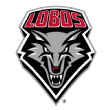 60. Danny Gonzales, New Mexico Lobos: A true Albuquerque success story, Gonzales stayed home and walked on at New Mexico as a safety and punter. He earned three letters with the Lobos and earned several team awards. Gonzales in 1997 played for a 9-4 team that won a WAC division title and reached a bowl game.
60. Danny Gonzales, New Mexico Lobos: A true Albuquerque success story, Gonzales stayed home and walked on at New Mexico as a safety and punter. He earned three letters with the Lobos and earned several team awards. Gonzales in 1997 played for a 9-4 team that won a WAC division title and reached a bowl game.
 59. Chris Creighton, Eastern Michigan Eagles: No coach has a cooler playing credential than Creighton, who served as a player-coach in Sweden and led the Limhamn Griffins to a national title in 1993. He also earned All-America honors at quarterback for Division III Kenyon, where he set passing records and helped the Lords to their lone league title in 1989.
59. Chris Creighton, Eastern Michigan Eagles: No coach has a cooler playing credential than Creighton, who served as a player-coach in Sweden and led the Limhamn Griffins to a national title in 1993. He also earned All-America honors at quarterback for Division III Kenyon, where he set passing records and helped the Lords to their lone league title in 1989.
 58. Geoff Collins, Georgia Tech Yellow Jackets: Collins had a solid career as an outside linebacker and defensive back at Western Carolina, an FCS program, from 1989 to 1992. He recorded 194 career tackles, including 130 in his final two seasons (11 tackles for loss). As a senior, Collins helped WCU to its first winning record (7-4) since 1986.
58. Geoff Collins, Georgia Tech Yellow Jackets: Collins had a solid career as an outside linebacker and defensive back at Western Carolina, an FCS program, from 1989 to 1992. He recorded 194 career tackles, including 130 in his final two seasons (11 tackles for loss). As a senior, Collins helped WCU to its first winning record (7-4) since 1986.
 57. Dino Babers, Syracuse Orange: Babers did it all for Hawaii in the early 1980s, making starts at running back, linebacker and safety. As a senior in 1983, Babers led Hawaii in rushing (295 yards) and served as special teams captain. He played a year in the CFL before an injury ended his career.
57. Dino Babers, Syracuse Orange: Babers did it all for Hawaii in the early 1980s, making starts at running back, linebacker and safety. As a senior in 1983, Babers led Hawaii in rushing (295 yards) and served as special teams captain. He played a year in the CFL before an injury ended his career.
 56. Kalani Sitake, BYU Cougars: Sitake started three seasons at fullback under coach Lavell Edwards, serving as a team captain in 2000 and winning team awards in each of his final two seasons. He had 70 carries, 57 receptions and 752 all-purpose yards in his career. He signed with the Cincinnati Bengals as a free agent but soon had to retire because of an injury.
56. Kalani Sitake, BYU Cougars: Sitake started three seasons at fullback under coach Lavell Edwards, serving as a team captain in 2000 and winning team awards in each of his final two seasons. He had 70 carries, 57 receptions and 752 all-purpose yards in his career. He signed with the Cincinnati Bengals as a free agent but soon had to retire because of an injury.
 55. David Shaw, Stanford Cardinal: The son of longtime coach Willie Shaw received four letters at Stanford as a wide receiver from 1991 to 1994. He appeared on two bowl teams, including a 10-win squad under coach Bill Walsh in 1992. Shaw finished his career with 57 catches for 664 yards and five touchdowns.
55. David Shaw, Stanford Cardinal: The son of longtime coach Willie Shaw received four letters at Stanford as a wide receiver from 1991 to 1994. He appeared on two bowl teams, including a 10-win squad under coach Bill Walsh in 1992. Shaw finished his career with 57 catches for 664 yards and five touchdowns.
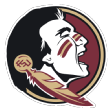 54. Mike Norvell, Florida State Seminoles: Norvell will never live down this look from his playing days at Central Arkansas, but he also thrived as a receiver for the team, then a Division II program. He remains the team’s career receptions leader (213), won Gulf South Conference freshman of the year honors in 2001 and helped UCA to a league title as a senior.
54. Mike Norvell, Florida State Seminoles: Norvell will never live down this look from his playing days at Central Arkansas, but he also thrived as a receiver for the team, then a Division II program. He remains the team’s career receptions leader (213), won Gulf South Conference freshman of the year honors in 2001 and helped UCA to a league title as a senior.
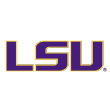 53. Ed Orgeron, LSU Tigers: After winning a Louisiana state high school title in 1977 alongside future NFL quarterback Bobby Hebert, Orgeron began his college career as a defensive lineman at LSU. But he left the program after his first year and transferred to FCS Northwestern State, where he stood out at both D-line positions. Orgeron recorded 121 tackles, including 17 for loss, in his final two seasons, and was a team captain as a senior in 1983.
53. Ed Orgeron, LSU Tigers: After winning a Louisiana state high school title in 1977 alongside future NFL quarterback Bobby Hebert, Orgeron began his college career as a defensive lineman at LSU. But he left the program after his first year and transferred to FCS Northwestern State, where he stood out at both D-line positions. Orgeron recorded 121 tackles, including 17 for loss, in his final two seasons, and was a team captain as a senior in 1983.
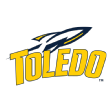 52. Jason Candle, Toledo Rockets: He’s one of two current FBS coaches to play at Mount Union, Division III’s version of Alabama. Candle won two national championships at Mount and was an all-conference wide receiver in 2001, when he led the team in receptions (41), receiving yards (778) and touchdowns (9). He had 57 catches for 1,037 yards and 11 touchdowns in his career with the Purple Raiders.
52. Jason Candle, Toledo Rockets: He’s one of two current FBS coaches to play at Mount Union, Division III’s version of Alabama. Candle won two national championships at Mount and was an all-conference wide receiver in 2001, when he led the team in receptions (41), receiving yards (778) and touchdowns (9). He had 57 catches for 1,037 yards and 11 touchdowns in his career with the Purple Raiders.
 51. Dana Dimel, UTEP Miners: Dimel earned two letters at Kansas State in the mid-1980s, and became an accomplished offensive lineman. He was named to Kansas State’s all-decade team for the 1980s. An accomplished weightlifter, Dimel earned All-America honors from the National Strength Coaches Association in 1986.
51. Dana Dimel, UTEP Miners: Dimel earned two letters at Kansas State in the mid-1980s, and became an accomplished offensive lineman. He was named to Kansas State’s all-decade team for the 1980s. An accomplished weightlifter, Dimel earned All-America honors from the National Strength Coaches Association in 1986.
 50. Jimmy Lake, Washington Huskies: Lake played strong safety at FCS Eastern Washington, earning honorable mention All-Big Sky honors and serving as a team captain. Lake had 88 tackles, five pass breakups, an interception and a forced fumble as a junior in 1997.
50. Jimmy Lake, Washington Huskies: Lake played strong safety at FCS Eastern Washington, earning honorable mention All-Big Sky honors and serving as a team captain. Lake had 88 tackles, five pass breakups, an interception and a forced fumble as a junior in 1997.
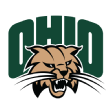 49. Tim Albin, Ohio Bobcats: Promoted to head coach this week after Frank Solich’s retirement, Albin is a former first-team all-conference wide receiver at Division II Northwestern Oklahoma State. He became the team’s first player to earn all-district honors three times, and finished his Hall of Fame career at the school with 109 receptions and 1,811 yards between 1985 and 1988.
49. Tim Albin, Ohio Bobcats: Promoted to head coach this week after Frank Solich’s retirement, Albin is a former first-team all-conference wide receiver at Division II Northwestern Oklahoma State. He became the team’s first player to earn all-district honors three times, and finished his Hall of Fame career at the school with 109 receptions and 1,811 yards between 1985 and 1988.
 48. Lance Leipold, Kansas Jayhawks: Leipold was an accomplished quarterback at Division III Wisconsin-Whitewater, which he led to a conference title in 1984 and finished as a top-10 passer in team history. He later coached his alma mater to six national titles in eight years between 2007 and 2014.
48. Lance Leipold, Kansas Jayhawks: Leipold was an accomplished quarterback at Division III Wisconsin-Whitewater, which he led to a conference title in 1984 and finished as a top-10 passer in team history. He later coached his alma mater to six national titles in eight years between 2007 and 2014.
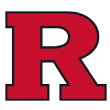 47. Greg Schiano, Rutgers Scarlet Knights: Schiano earned three letters as a linebacker at Bucknell from 1985 to 1987. He had a team-high 114 tackles as a junior, earning All-Patriot League honors and a Sporting News preseason All-America selection in 1987, when he served as a team captain.
47. Greg Schiano, Rutgers Scarlet Knights: Schiano earned three letters as a linebacker at Bucknell from 1985 to 1987. He had a team-high 114 tackles as a junior, earning All-Patriot League honors and a Sporting News preseason All-America selection in 1987, when he served as a team captain.
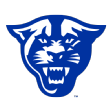 46. Shawn Elliott, Georgia State Panthers: A four-year letter winner at Appalachian State, Elliott earned all-conference honors at defensive end in 1995, when the Mountaineers won their first 12 games. He became the first Appalachian State player to appear in the FCS playoffs four times. Elliott played for teams that won two league titles and went 36-16.
46. Shawn Elliott, Georgia State Panthers: A four-year letter winner at Appalachian State, Elliott earned all-conference honors at defensive end in 1995, when the Mountaineers won their first 12 games. He became the first Appalachian State player to appear in the FCS playoffs four times. Elliott played for teams that won two league titles and went 36-16.
 45. Chuck Martin, Miami (Ohio) RedHawks: Raise your hand if you had Millikin University on your college coach bingo card. Martin is the second coach on the list from Millikin, where he was an All-America safety and a 2008 Hall of Fame inductee. He also earned all-league honors as a kicker for the Big Blue.
45. Chuck Martin, Miami (Ohio) RedHawks: Raise your hand if you had Millikin University on your college coach bingo card. Martin is the second coach on the list from Millikin, where he was an All-America safety and a 2008 Hall of Fame inductee. He also earned all-league honors as a kicker for the Big Blue.
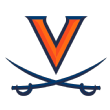 44. Bronco Mendenhall, Virginia Cavaliers: Mendenhall earned junior college All-America honors at Snow College, which he captained to a national title in 1985. He then transferred to Oregon State and started two seasons at linebacker and safety, serving as a team captain in 1987.
44. Bronco Mendenhall, Virginia Cavaliers: Mendenhall earned junior college All-America honors at Snow College, which he captained to a national title in 1985. He then transferred to Oregon State and started two seasons at linebacker and safety, serving as a team captain in 1987.
 43. Ryan Day, Ohio State Buckeyes: Day set New Hampshire state high school records for career pass yards (4,099) and touchdown passes (57), before attending college at the University of New Hampshire. Day became a star for the FCS Wildcats, starting three seasons and setting nine team records, including career completions, completion percentage, touchdown passes and total offense.
43. Ryan Day, Ohio State Buckeyes: Day set New Hampshire state high school records for career pass yards (4,099) and touchdown passes (57), before attending college at the University of New Hampshire. Day became a star for the FCS Wildcats, starting three seasons and setting nine team records, including career completions, completion percentage, touchdown passes and total offense.
 42. Rod Carey, Temple Owls: Carey started three years at center for Indiana under coach Bill Mallory in the early 1990s. As a senior in 1993, he was a captain and named the team’s outstanding offensive player at IU. Carey was part of three Hoosiers’ bowl teams.
42. Rod Carey, Temple Owls: Carey started three years at center for Indiana under coach Bill Mallory in the early 1990s. As a senior in 1993, he was a captain and named the team’s outstanding offensive player at IU. Carey was part of three Hoosiers’ bowl teams.
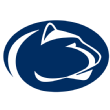 41. James Franklin, Penn State Nittany Lions: Franklin still can spin it to this day, a nod to his career as a quarterback for Division II East Stroudsburg in Pennsylvania. He set 23 team records in two seasons as a starter. In 1984, Franklin ranked sixth nationally in total offense and was nominated for national player of the year honors.
41. James Franklin, Penn State Nittany Lions: Franklin still can spin it to this day, a nod to his career as a quarterback for Division II East Stroudsburg in Pennsylvania. He set 23 team records in two seasons as a starter. In 1984, Franklin ranked sixth nationally in total offense and was nominated for national player of the year honors.
 40. Mario Cristobal, Oregon Ducks: Cristobal played offensive line during Miami’s heyday, helping the Hurricanes to national championships in 1989 and 1991. He earned four letters and was first-team All-Big East during his final season in 1992. Cristobal signed with the Denver Broncos as an undrafted free agent and played two years in NFL Europe with the Amsterdam Admirals.
40. Mario Cristobal, Oregon Ducks: Cristobal played offensive line during Miami’s heyday, helping the Hurricanes to national championships in 1989 and 1991. He earned four letters and was first-team All-Big East during his final season in 1992. Cristobal signed with the Denver Broncos as an undrafted free agent and played two years in NFL Europe with the Amsterdam Admirals.
 39. Maurice Linguist, Buffalo Bulls: A Dallas native, Linguist started 24 games and appeared in 42 as a strong safety from 2003 to 2006. In 2006, he earned honorable mention All-Big 12 honors and was named Baylor’s defensive MVP, recording 71 tackles, including 7.5 for loss, and two forced fumbles.
39. Maurice Linguist, Buffalo Bulls: A Dallas native, Linguist started 24 games and appeared in 42 as a strong safety from 2003 to 2006. In 2006, he earned honorable mention All-Big 12 honors and was named Baylor’s defensive MVP, recording 71 tackles, including 7.5 for loss, and two forced fumbles.
 38. Jay Norvell, Nevada Wolf Pack: The son of a former Wisconsin halfback, Norvell played defensive back at Iowa under Hayden Fry. He earned All-Big Ten honors and led the Big Ten with seven interceptions in 1985, as Iowa won the league and reached the Rose Bowl. Norvell went undrafted but became a “Spare Bear” for the Chicago Bears during the 1987 NFL strike. He ended up playing six games for coach Mike Ditka’s Bears.
38. Jay Norvell, Nevada Wolf Pack: The son of a former Wisconsin halfback, Norvell played defensive back at Iowa under Hayden Fry. He earned All-Big Ten honors and led the Big Ten with seven interceptions in 1985, as Iowa won the league and reached the Rose Bowl. Norvell went undrafted but became a “Spare Bear” for the Chicago Bears during the 1987 NFL strike. He ended up playing six games for coach Mike Ditka’s Bears.
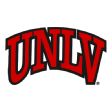 37. Marcus Arroyo, UNLV Rebels: Arroyo earned three letters as a quarterback at San Jose State from 1998 to 2002. He still ranks high on the team’s career charts for passing yards (4,603), completions (348), total offense (4,525 yards) and pass efficiency (115.6 rating). In 2000, he helped San Jose State to its most wins (7) since 1992.
37. Marcus Arroyo, UNLV Rebels: Arroyo earned three letters as a quarterback at San Jose State from 1998 to 2002. He still ranks high on the team’s career charts for passing yards (4,603), completions (348), total offense (4,525 yards) and pass efficiency (115.6 rating). In 2000, he helped San Jose State to its most wins (7) since 1992.
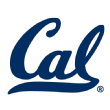 36. Justin Wilcox, California Golden Bears: Wilcox was a talented defensive back at Oregon, where he earned second-team All-Pac-10 honors as a senior in 1999. The Ducks reached bowl games in each of his final three seasons. Wilcox also quarterbacked his high school team to a state title in Oregon in 1993.
36. Justin Wilcox, California Golden Bears: Wilcox was a talented defensive back at Oregon, where he earned second-team All-Pac-10 honors as a senior in 1999. The Ducks reached bowl games in each of his final three seasons. Wilcox also quarterbacked his high school team to a state title in Oregon in 1993.
 35. Todd Graham, Hawai’i Rainbow Warriors: Several FBS coaches played prominently for NAIA programs, including Graham, a two-time All-America selection at East Central University in Ada, Oklahoma. He had a brief career with the NFL’s Arizona Cardinals before rerouting into a coaching career.
35. Todd Graham, Hawai’i Rainbow Warriors: Several FBS coaches played prominently for NAIA programs, including Graham, a two-time All-America selection at East Central University in Ada, Oklahoma. He had a brief career with the NFL’s Arizona Cardinals before rerouting into a coaching career.
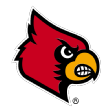 34. Scott Satterfield, Louisville Cardinals: A 27-game starter at quarterback for Appalachian State, Satterfield led the Mountaineers to a perfect season in 1995. He earned first-team all-conference honors that fall as Appalachian State raised its profile in the FCS. Satterfield later coached his alma mater through its FCS-FBS transition.
34. Scott Satterfield, Louisville Cardinals: A 27-game starter at quarterback for Appalachian State, Satterfield led the Mountaineers to a perfect season in 1995. He earned first-team all-conference honors that fall as Appalachian State raised its profile in the FCS. Satterfield later coached his alma mater through its FCS-FBS transition.
 33. Chris Klieman, Kansas State Wildcats: Klieman played defensive back at FCS Northern Iowa from 1986 to 1990, earning four letters and All-Gateway Conference honors three times. He recorded six interceptions, 62 tackles and six pass breakups in 1989, and 72 tackles, three fumble recoveries and two interceptions in 1990.
33. Chris Klieman, Kansas State Wildcats: Klieman played defensive back at FCS Northern Iowa from 1986 to 1990, earning four letters and All-Gateway Conference honors three times. He recorded six interceptions, 62 tackles and six pass breakups in 1989, and 72 tackles, three fumble recoveries and two interceptions in 1990.
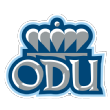 32. Ricky Rahne, Old Dominion Monarchs: Rahne grew up in Colorado but played quarterback at Cornell, becoming one of the top passers in Ivy League history. He started three seasons and was an honorable mention All-America selection and a two-time All-Ivy League pick. Rahne finished as Cornell’s all-time leader in passing yards (7,710) — ranking third in Ivy League history — as well as completions (678), touchdown passes (54) and total offense (7,994).
32. Ricky Rahne, Old Dominion Monarchs: Rahne grew up in Colorado but played quarterback at Cornell, becoming one of the top passers in Ivy League history. He started three seasons and was an honorable mention All-America selection and a two-time All-Ivy League pick. Rahne finished as Cornell’s all-time leader in passing yards (7,710) — ranking third in Ivy League history — as well as completions (678), touchdown passes (54) and total offense (7,994).
 31. Brady Hoke, San Diego State Aztecs: Hoke played linebacker at Ball State from 1977 to 1980, collecting four letters with the team he would later coach. As a senior, Hoke served as captain and recorded a team-high 150 tackles, earning second-team All-MAC honors. He finished third on the team with 99 tackles in 1978 as Ball State won the MAC with an 8-0 record. Hoke had 344 tackles in his final three seasons.
31. Brady Hoke, San Diego State Aztecs: Hoke played linebacker at Ball State from 1977 to 1980, collecting four letters with the team he would later coach. As a senior, Hoke served as captain and recorded a team-high 150 tackles, earning second-team All-MAC honors. He finished third on the team with 99 tackles in 1978 as Ball State won the MAC with an 8-0 record. Hoke had 344 tackles in his final three seasons.
 30. Kalen DeBoer, Fresno State Bulldogs: DeBoer became a star wide receiver for the University of Sioux Falls, then an NAIA program, from 1993 to 1996. He earned All-America honors for the Cougars, setting team records for receptions (234), receiving yards (3,400) and touchdown catches (33).
30. Kalen DeBoer, Fresno State Bulldogs: DeBoer became a star wide receiver for the University of Sioux Falls, then an NAIA program, from 1993 to 1996. He earned All-America honors for the Cougars, setting team records for receptions (234), receiving yards (3,400) and touchdown catches (33).
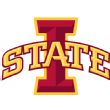 29. Matt Campbell, Iowa State Cyclones: After a difficult year at Pitt, Campbell decided to leave and was driving through Alliance, Ohio, when he saw a group of Mount Union players crossing the road. Long story short: Campbell transferred to the Division III school, won three national titles and became an All-American and two-time conference defensive lineman of the year. He finished with 26 sacks and 55 tackles for loss.
29. Matt Campbell, Iowa State Cyclones: After a difficult year at Pitt, Campbell decided to leave and was driving through Alliance, Ohio, when he saw a group of Mount Union players crossing the road. Long story short: Campbell transferred to the Division III school, won three national titles and became an All-American and two-time conference defensive lineman of the year. He finished with 26 sacks and 55 tackles for loss.
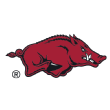 28. Sam Pittman, Arkansas Razorbacks: Add another coaching name to the Pittsburg State pipeline, as Pittman played there after his prep career in Oklahoma. He became a first-team NAIA All-American at defensive end and was a three-time all-conference selection. Pittman finished with Pittsburg State records for single-season sacks (22 in 1982) and career sacks (46). He had 263 career tackles and entered Pittsburg State’s Hall of Fame in 1998.
28. Sam Pittman, Arkansas Razorbacks: Add another coaching name to the Pittsburg State pipeline, as Pittman played there after his prep career in Oklahoma. He became a first-team NAIA All-American at defensive end and was a three-time all-conference selection. Pittman finished with Pittsburg State records for single-season sacks (22 in 1982) and career sacks (46). He had 263 career tackles and entered Pittsburg State’s Hall of Fame in 1998.
 27. P.J. Fleck, Minnesota Golden Gophers: A speedy wide receiver, he ranks in Northern Illinois’ top 5 in both career receptions (179) and receiving yards (2,162), and holds the team record for total punt returns (87). Fleck earned first-team All-MAC honors in 2003 and helped NIU to a No. 10 finish. He then played two years in the San Francisco 49ers’ organization, appearing in one game.
27. P.J. Fleck, Minnesota Golden Gophers: A speedy wide receiver, he ranks in Northern Illinois’ top 5 in both career receptions (179) and receiving yards (2,162), and holds the team record for total punt returns (87). Fleck earned first-team All-MAC honors in 2003 and helped NIU to a No. 10 finish. He then played two years in the San Francisco 49ers’ organization, appearing in one game.
 26. Luke Fickell, Cincinnati Bearcats: Fickell first made his mark on the mat, becoming one of the best high school wrestlers in Ohio history with three undefeated state championships. The Columbus native then stayed home and was a four-year starter at nose guard for Ohio State, logging a team-record 50 consecutive starts. He recorded 212 career tackles with the Buckeyes, including 26 tackles for loss and six sacks.
26. Luke Fickell, Cincinnati Bearcats: Fickell first made his mark on the mat, becoming one of the best high school wrestlers in Ohio history with three undefeated state championships. The Columbus native then stayed home and was a four-year starter at nose guard for Ohio State, logging a team-record 50 consecutive starts. He recorded 212 career tackles with the Buckeyes, including 26 tackles for loss and six sacks.
 25. Karl Dorrell, Colorado Buffaloes: Part of UCLA’s golden age, Dorrell played wide receiver for Bruins teams that went 43-13-4 and won three Pac-10 titles. He recorded 108 career receptions for 1,517 yards and nine touchdowns, finishing his career second on UCLA’s receptions list and fourth in receiving yards. Dorrell signed as a free agent with the Dallas Cowboys and played part of the 1987 NFL season being placed on injured reserve.
25. Karl Dorrell, Colorado Buffaloes: Part of UCLA’s golden age, Dorrell played wide receiver for Bruins teams that went 43-13-4 and won three Pac-10 titles. He recorded 108 career receptions for 1,517 yards and nine touchdowns, finishing his career second on UCLA’s receptions list and fourth in receiving yards. Dorrell signed as a free agent with the Dallas Cowboys and played part of the 1987 NFL season being placed on injured reserve.
 24. Thomas Hammock, Northern Illinois Huskies: Hammock was instrumental in Northern Illinois’ renaissance under coach Joe Novak, recording consecutive 1,000-yard rushing seasons in 2000 and 2001, and earning first-team All-MAC honors in both years. A heart condition discovered during the 2002 season led to Hammock’s retirement. He was replaced by Michael Turner.
24. Thomas Hammock, Northern Illinois Huskies: Hammock was instrumental in Northern Illinois’ renaissance under coach Joe Novak, recording consecutive 1,000-yard rushing seasons in 2000 and 2001, and earning first-team All-MAC honors in both years. A heart condition discovered during the 2002 season led to Hammock’s retirement. He was replaced by Michael Turner.
 23. Rick Stockstill, Middle Tennessee Blue Raiders: Stockstill earned three letters as a Florida State quarterback under coach Bobby Bowden, helping the team to three bowl games. In 1981, he was a team captain and earned honorable mention All-America honors after passing for 1,356 yards and 11 touchdowns. Stockstill finished with 2,834 pass yards and 26 touchdown passes (26), and was inducted into FSU’s Hall of Fame in 2019.
23. Rick Stockstill, Middle Tennessee Blue Raiders: Stockstill earned three letters as a Florida State quarterback under coach Bobby Bowden, helping the team to three bowl games. In 1981, he was a team captain and earned honorable mention All-America honors after passing for 1,356 yards and 11 touchdowns. Stockstill finished with 2,834 pass yards and 26 touchdown passes (26), and was inducted into FSU’s Hall of Fame in 2019.
 22. Shawn Clark, Appalachian State Mountaineers: Clark earned FCS All-America honors at Appalachian State in 1996 and 1998, and was a three-time all-conference offensive lineman. He played for Mountaineers teams that went 45-16, including the 1995 squad that started 12-0.
22. Shawn Clark, Appalachian State Mountaineers: Clark earned FCS All-America honors at Appalachian State in 1996 and 1998, and was a three-time all-conference offensive lineman. He played for Mountaineers teams that went 45-16, including the 1995 squad that started 12-0.
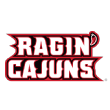 21. Billy Napier, Louisiana Ragin’ Cajuns: Napier was a two-time All-Southern Conference quarterback for Furman, an FCS program. He earned letters all four years and helped the team to two league titles and a national runner-up appearance as a junior in 2001. Napier set a team record with 64.8 percent career completions, and set a team record as a senior captain with 2,475 passing yards. He also was a finalist for the Walter Payton Award that season.
21. Billy Napier, Louisiana Ragin’ Cajuns: Napier was a two-time All-Southern Conference quarterback for Furman, an FCS program. He earned letters all four years and helped the team to two league titles and a national runner-up appearance as a junior in 2001. Napier set a team record with 64.8 percent career completions, and set a team record as a senior captain with 2,475 passing yards. He also was a finalist for the Walter Payton Award that season.
 20. Justin Fuente, Virginia Tech Hokies: Fuente played two years at quarterback for Oklahoma, setting a team freshman record for touchdown passes (11), before transferring to Murray State, an FCS program. In 1999, he earned Ohio Valley Conference player of the year honors and was a finalist for the Walter Payton Award. Fuente left Murray State with 11 team records, then played two seasons in the Arena League for the Oklahoma Wranglers.
20. Justin Fuente, Virginia Tech Hokies: Fuente played two years at quarterback for Oklahoma, setting a team freshman record for touchdown passes (11), before transferring to Murray State, an FCS program. In 1999, he earned Ohio Valley Conference player of the year honors and was a finalist for the Walter Payton Award. Fuente left Murray State with 11 team records, then played two seasons in the Arena League for the Oklahoma Wranglers.
 19. Tom Arth, Akron Zips: Part of the impressive John Carroll University coaching tree, Arth twice earned unanimous All-America honors as a quarterback for the Blue Streaks. He set 18 team records and led John Carroll to its first Division III national semifinal appearance in 2002. Arth then spent three seasons playing behind Peyton Manning with the Indianapolis Colts, and also spent time in NFL Europe, the CFL and the Arena Football League.
19. Tom Arth, Akron Zips: Part of the impressive John Carroll University coaching tree, Arth twice earned unanimous All-America honors as a quarterback for the Blue Streaks. He set 18 team records and led John Carroll to its first Division III national semifinal appearance in 2002. Arth then spent three seasons playing behind Peyton Manning with the Indianapolis Colts, and also spent time in NFL Europe, the CFL and the Arena Football League.
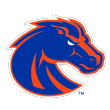 18. Andy Avalos, Boise State Broncos: The first-year coach returns to his alma mater, where he shined at linebacker from 2000 to 2004. A four-year starter, Avalos helped Boise State to three WAC championships and earned first-team all-league honors in his final two seasons. He led the team in tackles in his final three seasons and finished fourth on the team tackles chart (355). He was named one of Boise State’s top 30 players since the school installed blue turf in 1986.
18. Andy Avalos, Boise State Broncos: The first-year coach returns to his alma mater, where he shined at linebacker from 2000 to 2004. A four-year starter, Avalos helped Boise State to three WAC championships and earned first-team all-league honors in his final two seasons. He led the team in tackles in his final three seasons and finished fourth on the team tackles chart (355). He was named one of Boise State’s top 30 players since the school installed blue turf in 1986.
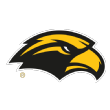 17. Will Hall, Southern Mississippi Golden Eagles: Hall is one of the more accomplished players here, despite never reaching the FBS. He led his high school team to a Mississippi state title, playing for his father, Bobby. Hall then earned junior college All-America honors in 1999 and 2000 at Northwest Mississippi Community College, setting national records for single-season total offense (4,075 yards) and single-game passing touchdowns (9). He transferred to North Alabama and won the Harlon Hill Trophy as the top Division II player, completing 71.8 percent for 3,531 yards and 30 touchdowns. He then played for his father again, in the National Indoor Football League. Hall had 2,046 pass yards and 44 touchdowns with the Tupelo FireAnts.
17. Will Hall, Southern Mississippi Golden Eagles: Hall is one of the more accomplished players here, despite never reaching the FBS. He led his high school team to a Mississippi state title, playing for his father, Bobby. Hall then earned junior college All-America honors in 1999 and 2000 at Northwest Mississippi Community College, setting national records for single-season total offense (4,075 yards) and single-game passing touchdowns (9). He transferred to North Alabama and won the Harlon Hill Trophy as the top Division II player, completing 71.8 percent for 3,531 yards and 30 touchdowns. He then played for his father again, in the National Indoor Football League. Hall had 2,046 pass yards and 44 touchdowns with the Tupelo FireAnts.
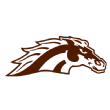 16. Tim Lester, Western Michigan Broncos: Lester helped build WMU’s reputation as a quarterback/passing game haven, setting 17 team records and eight MAC records as a quarterback. He finished his career fourth in NCAA history in passing yards (11,299) and sixth in passing touchdowns (87), and twice was second-team all-MAC. Drafted in the XFL, Lester played briefly there as well as in the Arena League. He entered WMU’s Hall of Fame in 2011.
16. Tim Lester, Western Michigan Broncos: Lester helped build WMU’s reputation as a quarterback/passing game haven, setting 17 team records and eight MAC records as a quarterback. He finished his career fourth in NCAA history in passing yards (11,299) and sixth in passing touchdowns (87), and twice was second-team all-MAC. Drafted in the XFL, Lester played briefly there as well as in the Arena League. He entered WMU’s Hall of Fame in 2011.
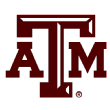 15. Jimbo Fisher, Texas A&M Aggies: One of several small-college stars in the FBS coaching ranks, Fisher earned All-America honors at two Division III programs (Salem and Samford). The quarterback won national player of the year honors as Samford’s quarterback in 1987, and then spent a season in the Arena League. Fisher’s college athletics career actually began at Clemson, but on the baseball diamond.
15. Jimbo Fisher, Texas A&M Aggies: One of several small-college stars in the FBS coaching ranks, Fisher earned All-America honors at two Division III programs (Salem and Samford). The quarterback won national player of the year honors as Samford’s quarterback in 1987, and then spent a season in the Arena League. Fisher’s college athletics career actually began at Clemson, but on the baseball diamond.
 14. Nick Rolovich, Washington State Cougars: Rolovich made significant contributions for two college programs at different levels. He twice earned junior college All-America honors at City College of San Francisco, leading the team to a national title. Rolovich then transferred to Hawaii, where he started most of the 2001 season and passed for 3,361 yards and 34 touchdowns. He set 19 team passing records and eight total offense records that fall. Rolovich had two short stints in the NFL and a longer stint in NFL Europe, and he played five years in the Arena Football League, with four teams.
14. Nick Rolovich, Washington State Cougars: Rolovich made significant contributions for two college programs at different levels. He twice earned junior college All-America honors at City College of San Francisco, leading the team to a national title. Rolovich then transferred to Hawaii, where he started most of the 2001 season and passed for 3,361 yards and 34 touchdowns. He set 19 team passing records and eight total offense records that fall. Rolovich had two short stints in the NFL and a longer stint in NFL Europe, and he played five years in the Arena Football League, with four teams.
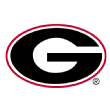 13. Kirby Smart, Georgia Bulldogs: The son of a high school coach, Smart earned four letters as a defensive back at Georgia from 1995 to 1998. He recorded 13 career interceptions, which ranks sixth in team history, and 11 in his final two seasons. Smart was first-team All-SEC as a senior, when he led the league in interceptions. He spent the 1999 NFL preseason with the Indianapolis Colts but was cut before the regular season.
13. Kirby Smart, Georgia Bulldogs: The son of a high school coach, Smart earned four letters as a defensive back at Georgia from 1995 to 1998. He recorded 13 career interceptions, which ranks sixth in team history, and 11 in his final two seasons. Smart was first-team All-SEC as a senior, when he led the league in interceptions. He spent the 1999 NFL preseason with the Indianapolis Colts but was cut before the regular season.
 12. Willie Taggart, Florida Atlantic Owls: Taggart played at Western Kentucky, then an FCS school, and started four seasons at quarterback. He twice was a finalist for the Walter Payton Award and earned All-America honors as a senior in 1998. Taggart set 11 team records, including 47 rushing touchdowns, and set the Division I quarterback rushing record with 3,997 yards. He also had a 127.71 pass efficiency rating.
12. Willie Taggart, Florida Atlantic Owls: Taggart played at Western Kentucky, then an FCS school, and started four seasons at quarterback. He twice was a finalist for the Walter Payton Award and earned All-America honors as a senior in 1998. Taggart set 11 team records, including 47 rushing touchdowns, and set the Division I quarterback rushing record with 3,997 yards. He also had a 127.71 pass efficiency rating.
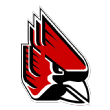 11. Mike Neu, Ball State Cardinals: Neu was a four-year starter at quarterback for Ball State from 1990 to 1993. As a senior, he led the Cardinals to a MAC championship and was named league MVP and offensive player of the year. Neu started 38 games for the Cardinals and had 6,271 career passing yards and 43 touchdowns. He then played three seasons in the CFL and Arena League.
11. Mike Neu, Ball State Cardinals: Neu was a four-year starter at quarterback for Ball State from 1990 to 1993. As a senior, he led the Cardinals to a MAC championship and was named league MVP and offensive player of the year. Neu started 38 games for the Cardinals and had 6,271 career passing yards and 43 touchdowns. He then played three seasons in the CFL and Arena League.
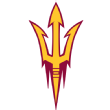 10. Herm Edwards, Arizona State Sun Devils: Edwards played two seasons at cornerback for Cal (1972, 1974) before finishing his career at San Diego State. An undrafted free agent, Edwards started seven seasons for the Philadelphia Eagles and never missed a game from 1977 to 1985. His 38 career interceptions are one shy of the franchise record, and he earned all-NFC honors in 1980 as the Eagles reached Super Bowl XV.
10. Herm Edwards, Arizona State Sun Devils: Edwards played two seasons at cornerback for Cal (1972, 1974) before finishing his career at San Diego State. An undrafted free agent, Edwards started seven seasons for the Philadelphia Eagles and never missed a game from 1977 to 1985. His 38 career interceptions are one shy of the franchise record, and he earned all-NFC honors in 1980 as the Eagles reached Super Bowl XV.
 9. Kyle Whittingham, Utah Utes: Whittingham spent most of his early life on the other side of the Holy War. The Provo native and Provo High star became a tackling machine as a linebacker for BYU. He recorded 240 tackles in his final two seasons and won WAC defensive player of the year honors in 1981, when he had 7 sacks, 3 fumble recoveries, 16 tackles for loss, 2 interceptions and 9 quarterback hurries. He played with two USFL teams and was a replacement player for the Los Angeles Rams during the NFL strike of 1987.
9. Kyle Whittingham, Utah Utes: Whittingham spent most of his early life on the other side of the Holy War. The Provo native and Provo High star became a tackling machine as a linebacker for BYU. He recorded 240 tackles in his final two seasons and won WAC defensive player of the year honors in 1981, when he had 7 sacks, 3 fumble recoveries, 16 tackles for loss, 2 interceptions and 9 quarterback hurries. He played with two USFL teams and was a replacement player for the Los Angeles Rams during the NFL strike of 1987.
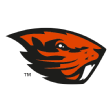 8. Jonathan Smith, Oregon State Beavers: A walk-on quarterback, Smith became one of the most significant players in Oregon State history. He started the final 39 games of his career, was a two-time captain and led the Beavers to an 11-1 season and a No. 4 final ranking in 2000. Smith left as Oregon State’s all-time leading passer (9,680 yards, now ranks third) and set team records for career touchdown passes (55) and single-season pass yards (3,053 yards in 1999).
8. Jonathan Smith, Oregon State Beavers: A walk-on quarterback, Smith became one of the most significant players in Oregon State history. He started the final 39 games of his career, was a two-time captain and led the Beavers to an 11-1 season and a No. 4 final ranking in 2000. Smith left as Oregon State’s all-time leading passer (9,680 yards, now ranks third) and set team records for career touchdown passes (55) and single-season pass yards (3,053 yards in 1999).
 7. Jeff Brohm, Purdue Boilermakers: Few football players have left a stronger legacy in Louisville than Brohm, a quarterback named the Kentucky high school player of the 1980s. He started three seasons at the University of Louisville, passing for 5,451 yards and 38 touchdowns with 402 completions and a passer rating of 129.97. He won team MVP honors in each of his final two years. Brohm appeared in eight NFL games in seven seasons but made a stronger mark in the XFL, earning first-team all-league honors and delivering this memorable line.
7. Jeff Brohm, Purdue Boilermakers: Few football players have left a stronger legacy in Louisville than Brohm, a quarterback named the Kentucky high school player of the 1980s. He started three seasons at the University of Louisville, passing for 5,451 yards and 38 touchdowns with 402 completions and a passer rating of 129.97. He won team MVP honors in each of his final two years. Brohm appeared in eight NFL games in seven seasons but made a stronger mark in the XFL, earning first-team all-league honors and delivering this memorable line.
 6. Scott Frost, Nebraska Cornhuskers: The Wood River, Nebraska, native began his college career at Stanford, earning two letters at quarterback and safety before transferring home. Frost took over as Nebraska’s starting quarterback in 1996 and accounted for 22 touchdowns (13 pass, 9 rush) while winning Big 12 newcomer of the year honors. In 1997, he helped Nebraska to its third national title in four years, rushing for 1,095 yards and 19 touchdowns. A third-round NFL draft pick, Frost appeared in 59 NFL games at safety, recording 72 tackles.
6. Scott Frost, Nebraska Cornhuskers: The Wood River, Nebraska, native began his college career at Stanford, earning two letters at quarterback and safety before transferring home. Frost took over as Nebraska’s starting quarterback in 1996 and accounted for 22 touchdowns (13 pass, 9 rush) while winning Big 12 newcomer of the year honors. In 1997, he helped Nebraska to its third national title in four years, rushing for 1,095 yards and 19 touchdowns. A third-round NFL draft pick, Frost appeared in 59 NFL games at safety, recording 72 tackles.
 5. Steve Sarkisian, Texas Longhorns: Sarkisian first starred at quarterback for El Camino College, setting national junior college records in both completion percentage (72.4) and pass efficiency (203.8 rating). He then transferred to BYU and earned WAC offensive player of the year honors as a senior in 1996, when he led the nation in pass efficiency (173.56) and broke Steve Young’s career completion percentage record (65.2). He won the Sammy Baugh Trophy and then played three seasons in the CFL, starting for Saskatchewan in 1999.
5. Steve Sarkisian, Texas Longhorns: Sarkisian first starred at quarterback for El Camino College, setting national junior college records in both completion percentage (72.4) and pass efficiency (203.8 rating). He then transferred to BYU and earned WAC offensive player of the year honors as a senior in 1996, when he led the nation in pass efficiency (173.56) and broke Steve Young’s career completion percentage record (65.2). He won the Sammy Baugh Trophy and then played three seasons in the CFL, starting for Saskatchewan in 1999.
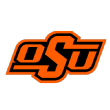 4. Mike Gundy, Oklahoma State Cowboys: After earning Oklahoma player of the year honors in high school, Gundy went to Oklahoma State, where he started from 1986 to 1989. He began his career by throwing 138 consecutive passes without an interception, an FBS record later broken by Robert Griffin III. Gundy led Oklahoma State to a 20-4 record between 1987-88 and finished as the Big Eight’s career leader in pass yards (8,473) and total offense (8,272 yards).
4. Mike Gundy, Oklahoma State Cowboys: After earning Oklahoma player of the year honors in high school, Gundy went to Oklahoma State, where he started from 1986 to 1989. He began his career by throwing 138 consecutive passes without an interception, an FBS record later broken by Robert Griffin III. Gundy led Oklahoma State to a 20-4 record between 1987-88 and finished as the Big Eight’s career leader in pass yards (8,473) and total offense (8,272 yards).
 3. Josh Heupel, Tennessee Volunteers: Despite earning South Dakota’s high school player of the year honors, Heupel’s college career began quietly at Weber State, before transferring to Snow College in Utah. His next move to Oklahoma set up a historic run, as he led the Sooners to a national title in 2000. Heupel won the Walter Camp Award, was named AP Player of the Year and finished second for the Heisman Trophy. He went 20-5 in two seasons as OU’s starter, passing for 7,456 yards and 53 touchdowns.
3. Josh Heupel, Tennessee Volunteers: Despite earning South Dakota’s high school player of the year honors, Heupel’s college career began quietly at Weber State, before transferring to Snow College in Utah. His next move to Oklahoma set up a historic run, as he led the Sooners to a national title in 2000. Heupel won the Walter Camp Award, was named AP Player of the Year and finished second for the Heisman Trophy. He went 20-5 in two seasons as OU’s starter, passing for 7,456 yards and 53 touchdowns.
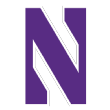 2. Pat Fitzgerald, Northwestern Wildcats: While several FBS coaches had notable NFL careers, none accomplished more in college than Fitzgerald. He won consecutive national defensive player of the year awards (Nagurski, Bednarik) in 1995 and 1996, helping Northwestern to a Rose Bowl and consecutive Big Ten championships. The two-time first-team All-American had 299 career tackles, including 20 for loss, along with five forced fumbles and three interceptions in 23 starts. He was inducted into the College Football Hall of Fame in 2008.
2. Pat Fitzgerald, Northwestern Wildcats: While several FBS coaches had notable NFL careers, none accomplished more in college than Fitzgerald. He won consecutive national defensive player of the year awards (Nagurski, Bednarik) in 1995 and 1996, helping Northwestern to a Rose Bowl and consecutive Big Ten championships. The two-time first-team All-American had 299 career tackles, including 20 for loss, along with five forced fumbles and three interceptions in 23 starts. He was inducted into the College Football Hall of Fame in 2008.
 1. Jim Harbaugh, Michigan Wolverines: Harbaugh retains the top spot after a decorated career as both a college and NFL quarterback. The son of college coach Jack Harbaugh finished third in Heisman Trophy voting in 1986, when he won Big Ten MVP and earned All-America honors. His career pass efficiency mark (149.6) led the NCAA for 12 years. A first-round pick of the Chicago Bears in 1987, Harbaugh played portions of 15 NFL seasons, reaching the Pro Bowl and earning AFC offensive player of the year honors with Indianapolis in 1995.
1. Jim Harbaugh, Michigan Wolverines: Harbaugh retains the top spot after a decorated career as both a college and NFL quarterback. The son of college coach Jack Harbaugh finished third in Heisman Trophy voting in 1986, when he won Big Ten MVP and earned All-America honors. His career pass efficiency mark (149.6) led the NCAA for 12 years. A first-round pick of the Chicago Bears in 1987, Harbaugh played portions of 15 NFL seasons, reaching the Pro Bowl and earning AFC offensive player of the year honors with Indianapolis in 1995.
